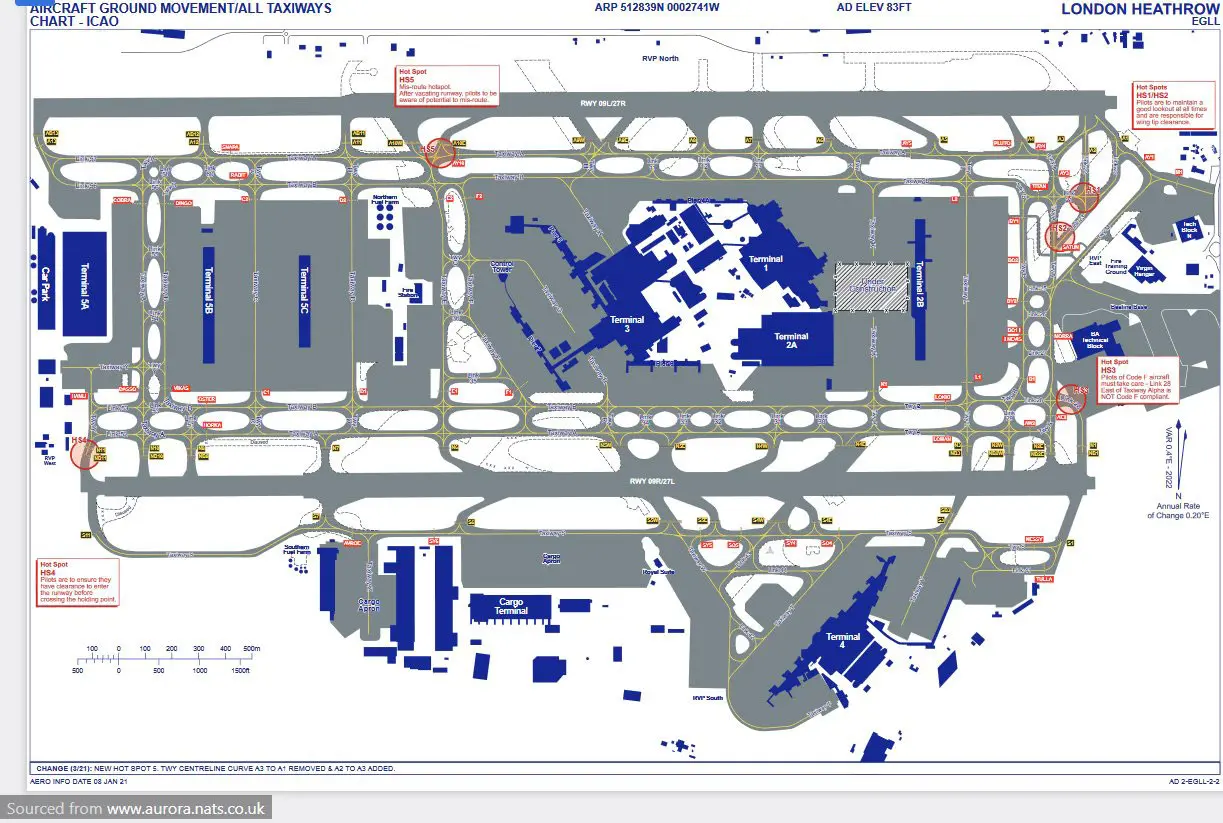A32NX: Help with calculations (part 1: landing)
The EFB (flypad) of the A32NX offers a "Performance" page ("calculator" icon) with two tabs:
- the landing length calculator (Landing) - this tutorial
- the descent calculator (Top of Descent) – tutorial to come
1 - Calculation of landing runway lengths
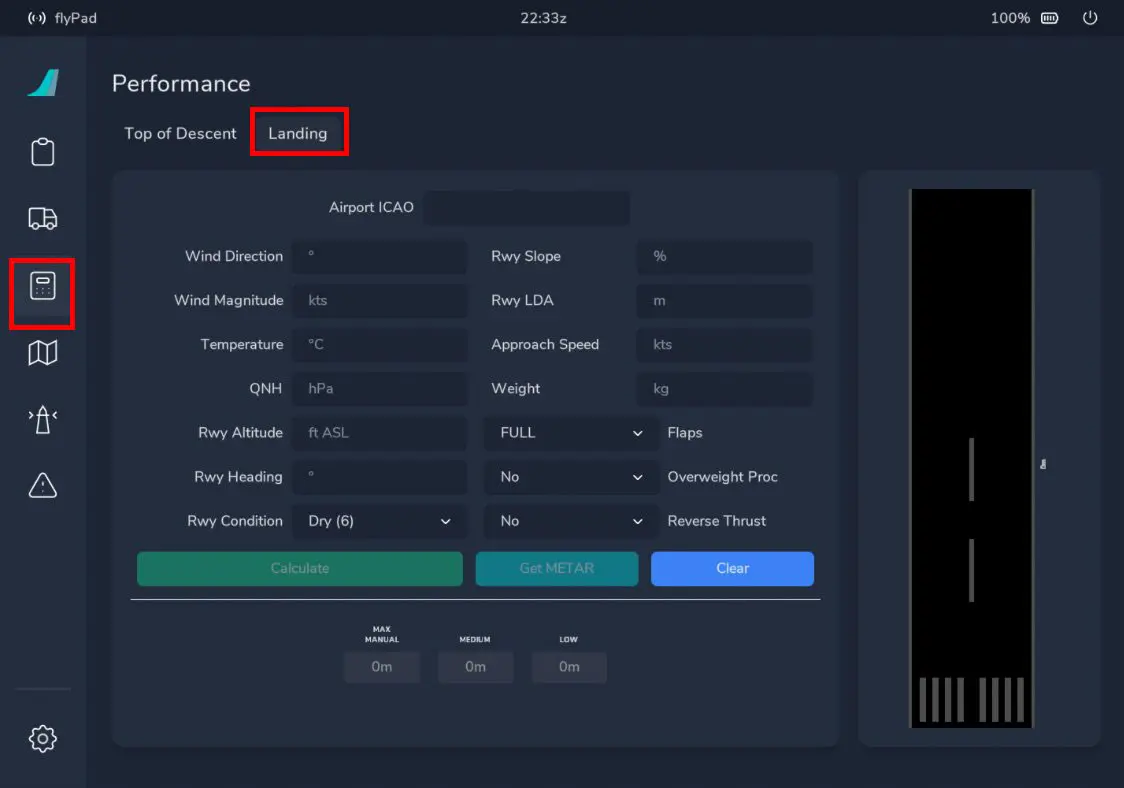
We are going to calculate the length needed for our landing by filling in all the parameters on this page, taking as an example a 25L arrival at Brest – Guipavas (LFRB).
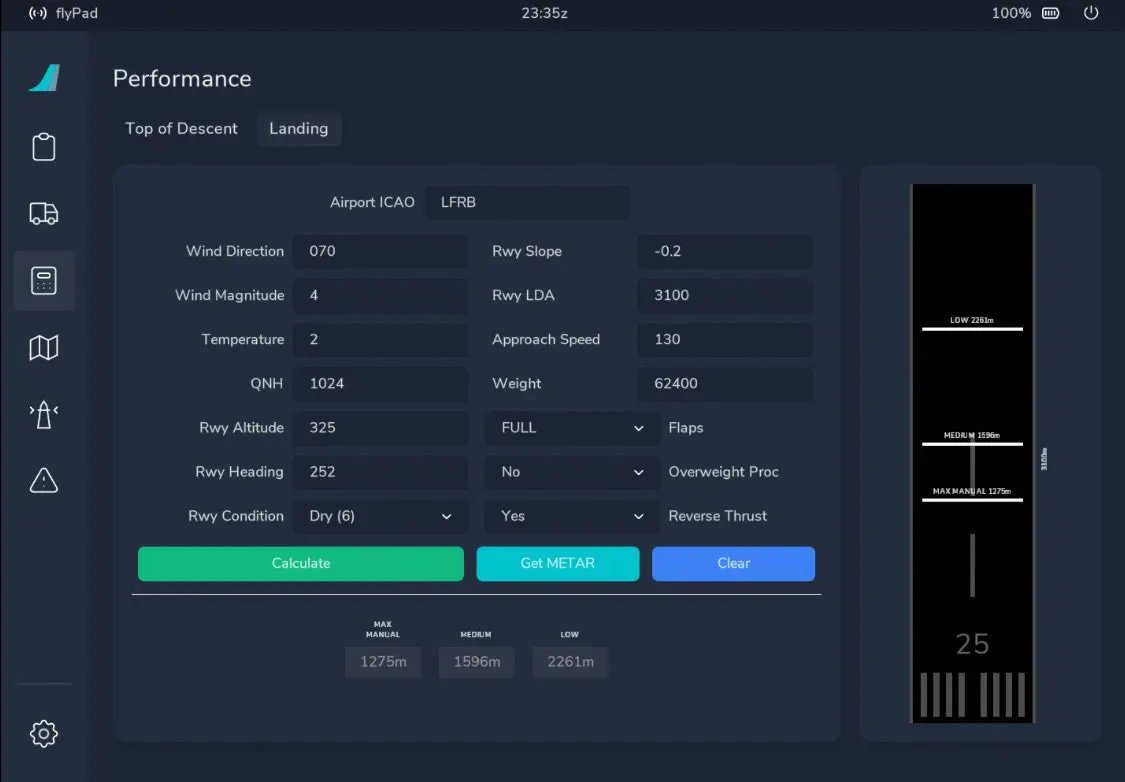
Weather data is provided by the METAR on the EFB homepage via the "Get METAR" button,
- wind direction
- wind force
- temperature
-QNH
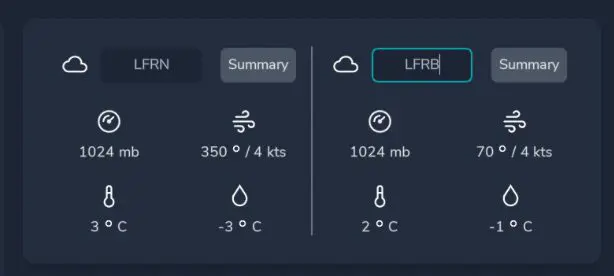
The "terrain" data is provided by the airfield map (below),
- terrain elevation
- landing strip orientation
- track quality
- slope value (see calculation)
- the useful length of the runway (LDA)
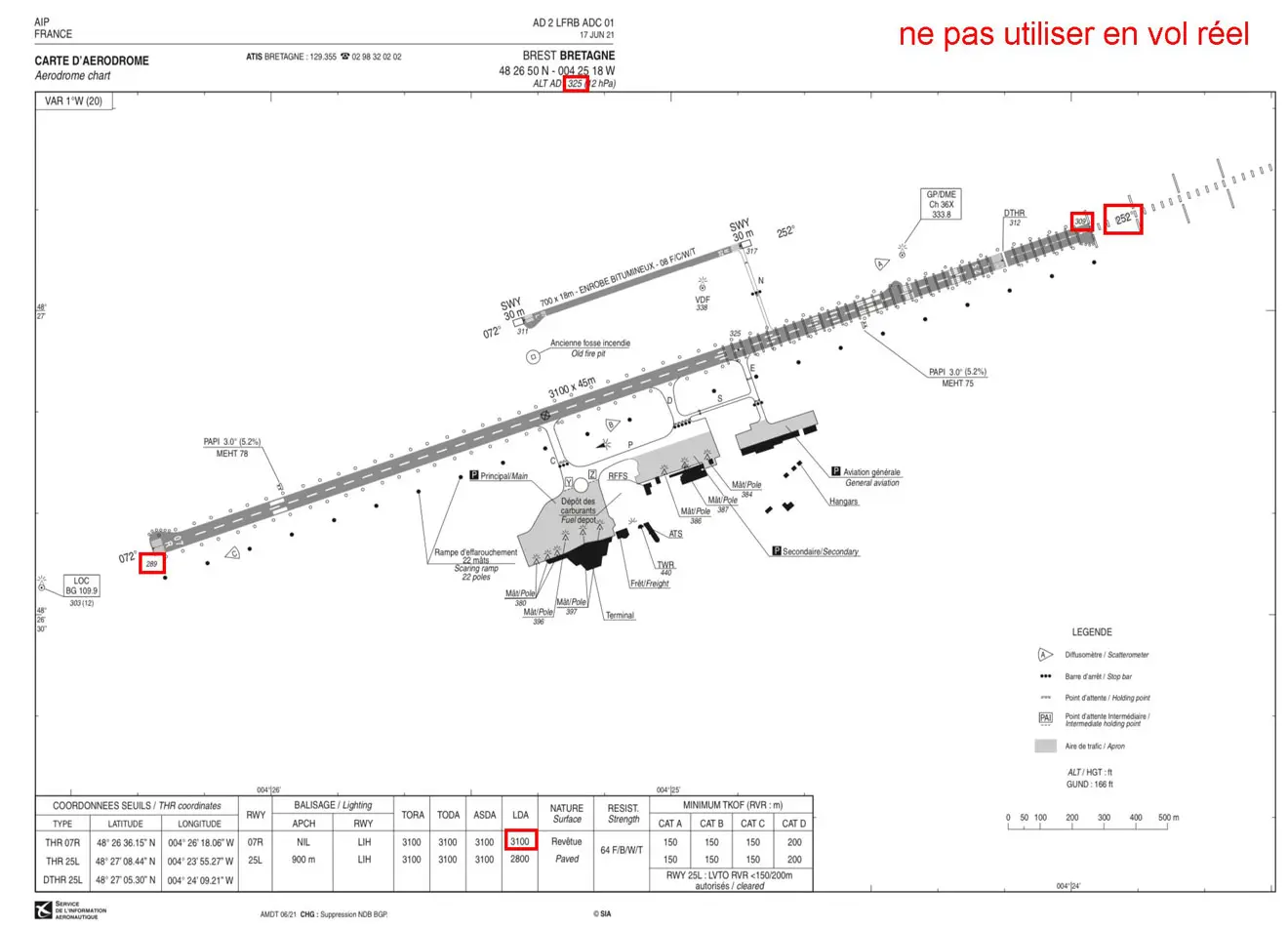
(*) calculation of the "slope"
this is the slope coefficient of the track in %
((start threshold altitude – end threshold altitude)/runway length)x100
Values are in ft
The lengths of the tracks being provided in meters, they must be multiplied by 3.28
For LFRB: ((309 – 289)/(3100x3.28))x100 = 0.196 rounded to 0.2
The track being descending in this direction, the value will be negative: -0.2%
The "planes" data are to be taken
- in the MCDU, APPR page for the approach speed
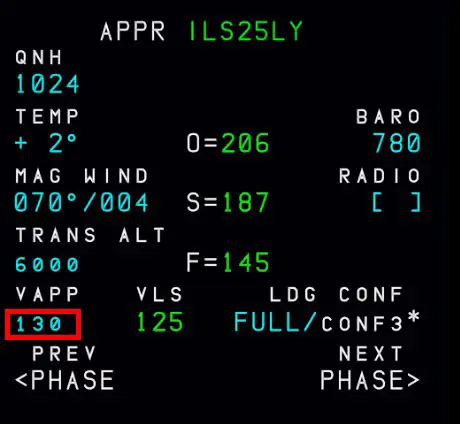
- the lower ECAM for the weight of the aircraft
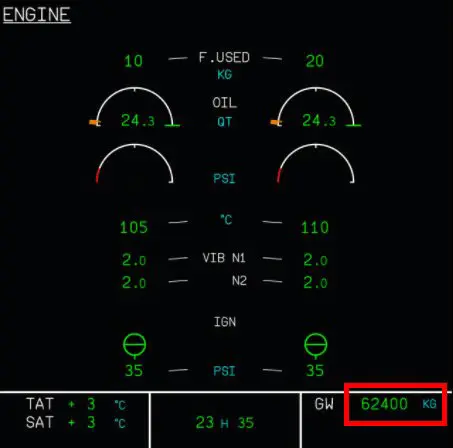
- the value of the flaps is to be chosen
- in principle no overload (weight greater than the maximum allowed)
- whether or not we will put the "reverses"
A click on the "Calculate" button provides the landing lengths according to 3 braking situations:
- max manual (maximum braking)
- medium (medium braking)
- low (low braking)

A graph of the track shows the stopping zones calculated in relation to the track threshold selected with the information entered.
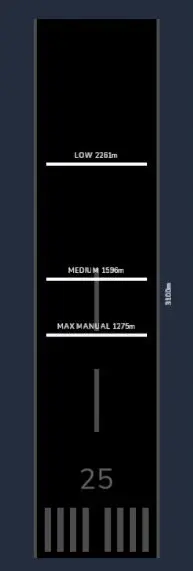
Below is an example if the usable track is too short for certain types of braking (simulated by setting the LDA value to 1300 m).
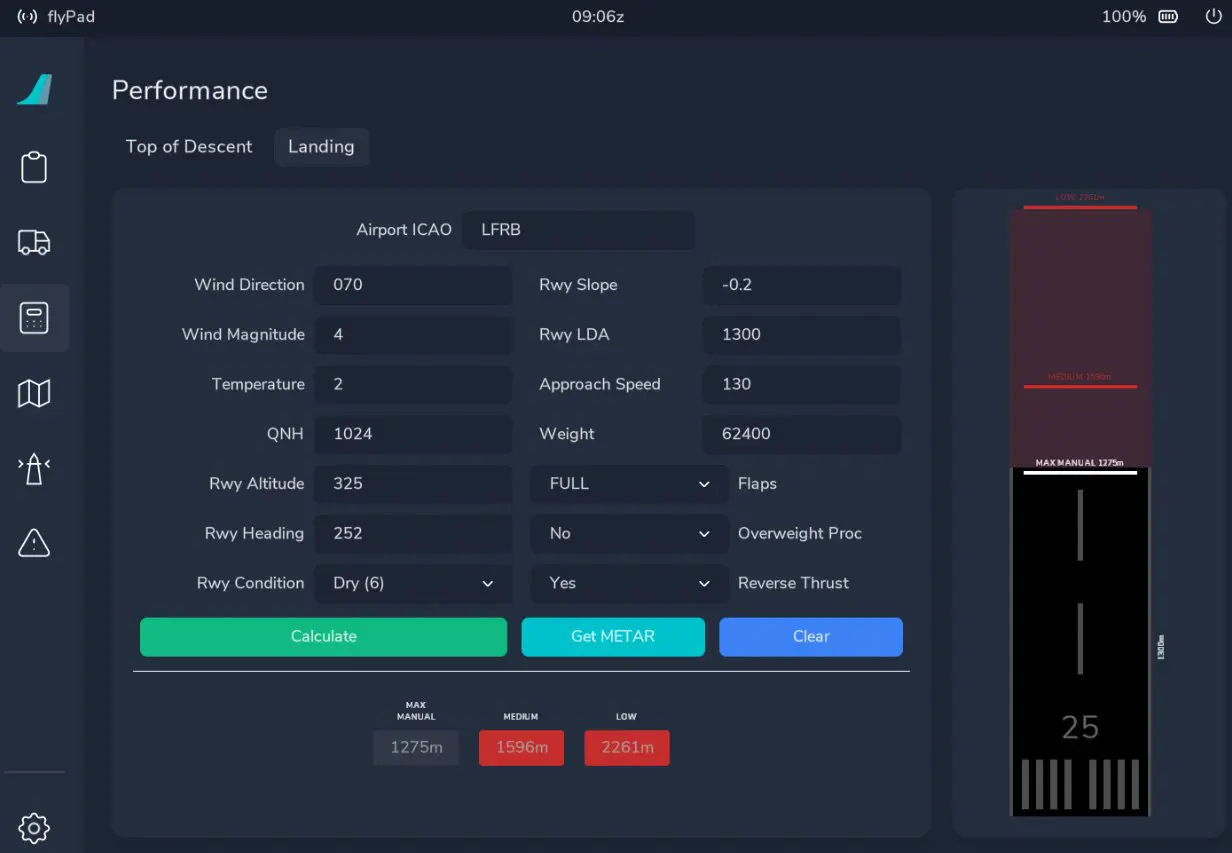
PRO's tip:
Knowing these distances is also very useful for locating your aircraft on the runway in relation to exits in LVP (Low Visibility Procedures), particularly at large airports such as CDG when visibility is very poor.
Example in London (EGLL) for a landing on the North runway facing East. There are many exits and you may not visually locate your aircraft.
